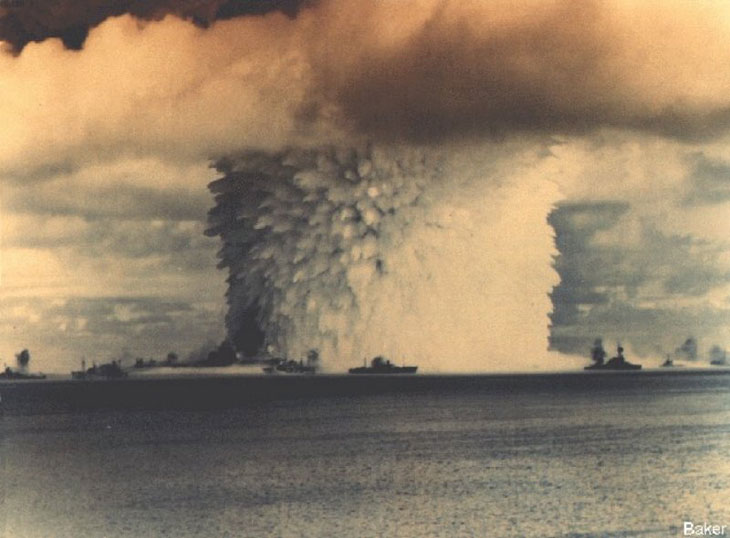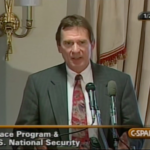What Trump’s First Nuclear Posture Review Should Do
Posted on

If we’re lucky, the fourth Nuclear Posture Review (NPR) will encourage a reawakening of strategic analysis and renewed efforts to assess the role of nuclear weapons in US national security. If we’re not, and this is more likely, we’ll find ourselves awash in time-worn arguments about assured destruction, limited war, arms limitation, modernization, and morality.
Such arguments have dominated discussions of nuclear weapons for the past two decades or so, typically promoting a preferred course of action by emphasizing a selected value — stability, or transparency, or affordability or political acceptability (which really means consensus). The result has been a protracted narrowing of the role and mission of nuclear weapons, together with a rejection of non-nuclear weapons that somebody thinks some foreign government might think could be nuclear weapons. (Ed.: think of some Prompt Global Strike options.)

Bob Butterworth
The United States has conducted no operational tests of its nuclear weapons since 1992. For years, American policymakers have said we would design no new nuclear weapons (although sometimes what “new” means has been interpreted broadly). The US has denied itself sub-kiloton warheads, dual-use artillery and tactical missiles, and ICBMs armed with non-nuclear warheads. National policy continues to emphasize limits on when and where and why the US would use nuclear weapons. The US no longer deploys nuclear weapons abroad (except in response to European demands) or on Navy surface ships, and few of its forces are equipped and trained to operate in a nuclear environment.
Those actions may reflect various convictions, such as: fewer nukes are safer; or, more usable nukes are more destabilizing; or nukes are only good for deterring nuclear attacks; or every nuke is a strategic nuke; or deployed nukes are on a “hair trigger.” But those convictions do not comprise or reflect a national strategic assessment. Nor, to be fair, do many of the convictions on the other side, such as: “deterrence” is the primary security goal; or, modernization is more important today than innovation; or ICBMs are needed to ensure that an enemy will have to strike CONUS with several hundred missiles at least.

Sandia nuclear weapons component test
It takes a wider scope to determine what is good for the national security posture overall, a scope that includes looking at interdependencies with other force packages and programs, at the inevitable gap between policy declarations and execution planning, at what adversaries might understand and what they are actually able to do, at what we might want to do, and at how risks and uncertainties may affect outcomes. It reminds us to consider logistics, communications, mobility, and many other concrete factors that can bring upsetting surprise when long-studied situations become real challenges.
The broader view, in short, helps test the range of specific realities that real contingencies will give to abstract concepts. It reminds us, for example, that our nuclear posture must be shaped not only for deterrence but also for managing crises, controlling escalation, encouraging an early and satisfactory conclusion in war, and ensuring against defeat even after suffering catastrophic conventional losses. It reminds us, too, that there can be no stark “separation of powers,” conventional and nuclear, in our strategic posture. Bernard Brodie referred to nuclear weapons as a “deep pedal tone” underlying all our national security operations, and the chronic issues of extended deterrence testify to the linkage between conventional force operations and nuclear crises.
Above all, strategic assessments will help keep us clear about what we don’t know and how that ignorance might affect alternative courses of action. We build weapons, configure postures, and train and exercise forces to threaten defeat or punitive retaliation against those who would attack US interests. If events are completely controlled by the governments involved, and if would-be attackers credit our threats and for that reason refrain from attacking, they are deterred. It is not our threats, but their reactions to them that determines whether our deterrence succeeds or fails. We try very hard, using all the intelligence we can command, to understand how would-be adversaries view their needs, the military balance, and our own statements and capabilities, in the hope that we can make threats that are credible and meaningful and that will have the effect we desire.
But we might get things wrong, because we did not do a good job of intelligence collection and assessment, or because we do not understand well enough how the other side views us and our relative situations, or because it is really just too hard to get it right all the time. After all, with nuclear weapons we are talking about situations with no precedent and for which we have scarce empirical data. These concerns will multiply with the increased number and variety of nuclear situations we might confront in years to come.
Our planning, consequently, must provide capabilities to accomplish our goals across a range of conceivable circumstances, keeping in mind that what we want to accomplish and the effects we want to create to do so will depend on the particular circumstances of particular challenges at particular times. Yes, we must have forces that are secure, survivable, and effective; that can be controlled responsively and employed precisely; that can be tailored quickly to deliver the effects needed to accomplish our objectives. And again, those attributes must be rendered in specific operational terms. Whatever our planning, the particular characteristics of the contingency will heavily shape both what we will be able to do, and what we will want to.
The Defense Department used to do a pretty good job of using strategic security assessments to explain its nuclear policy and programs (see, for example, the Annual Report to the Congress offered by Defense Secretaries Schlesinger, Brown, Weinberger or Carlucci). Perhaps we can again root decisions about nuclear matters in an understanding of our national security interests. And with luck, NPR4 might help get us there.
Subscribe to our newsletter
Promotions, new products and sales. Directly to your inbox.
